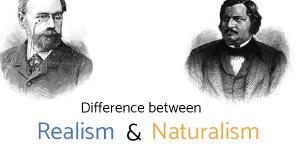What Makes a Classical Hollywood Film


Film lovers will already know that Classical Hollywood Film style comprises some of the best and most well-known films created in the seventh art. Though not exactly considered a movement in cinema history, it is true that Classical Hollywood cinema defined an era through a style and a system that turned into a norm.
If you want to know more, keep on reading this OneHowTo article to know what makes a classical Hollywood film.
What is considered classical Hollywood cinema?
It was the historians Bordwell, Staiger and Thompson who used the term Classical Hollywood cinema as a whole, in order to group films made between 1917 and 1960. To do so, they randomly selected one hundred films made during that period of time, trying to pinpoint the characteristics that defined films made in Hollywood in this era.
So, what makes a classical Hollywood film? As we've said, we can pinpoint classical Hollywood films if they were made between 1917 and 1960, within the new Hollywood studio industry. However, this does not apply to all of them. Pre-code films, which were recorded within the American film industry between 1929 and 1934 did not follow all of the criteria specified by Bordwell, Staiger and Thompson, especially when it comes to the themes and characteristics of the characters depicted in Classical Hollywood films. In order to keep traditional values, "The Code" described several attitudes that could not be show on screen according to Catholic standards, due to the fact that sound films were having a great impact on children according to the American Roman Catholic church.
Despite this exception, classical Hollywood films can be defined by the characteristics mentioned below, which were created so the viewer could create a mental set to understand film as a means of story telling, to give an art that had begun just a few decades ago a set of rules.
Characteristics
Bordwell designated several style attributes to Classical Hollywood films, which are directly related to Renaissance ideas and theatrical realism. So this is what defines a Classical Hollywood movie.
Narrative
The actual narrative of the story was exactly the same in all Classical movies, as they followed the classic western narrative, also known as canonic narrative; which separates beginning middle and end in a story.
Within this canonic narrative, classic movies always had two plots:
- Main plot: An actor or actress is the main character that is driven towards a goal after its status quo is broken and goes on an often psychologically-driven journey towards that goal.
- Secondary plots: Around which all the main and secondary characters are attached. A secondary plot would usually imply a romance if it was not in the main plot.
All actions by characters in the plot have consequences, this is why all scenes are driven by cause-effect, this is why parallelisms between two separate events were created in order to form a connection.
With the appearance of sound, music also accompanied the psychology of the characters, creating juxtapositions in scenes and cues which anticipated certain actions.
Another way of creating a connection with the characters was by using close-ups to create empathy with the character and only showing what is vitally important on screen, leaving secondary elements and characters in the background.
Conception of space
Films were set in one space, meaning that the imaginary was constructed in only one world. In order for the spectator to perceive this space as one, edition was often based on shot-reverse shot during conversations or long shots in order to set the viewer in the context of the world the film created and gave a better perspective of scale.
The 180 degree rule was pretty useful in order to create the illusion of continuity in conversations between two characters, as well as the eyeline match.
Conception of time
As the narrative is canonic, this also meant classical Hollywood films were also linear in their narrative, meaning that the plot never moved backwards and forwards in time. Edition was based on continuity, which means that edition had to be as subtle as possible so it didn't interfere with the film's imaginary. To create a sense of simultaneity, the jump cut was often use to depict two things that happened at the same time.
The screen time always depicted real time, it was never quicker or slower than real life.
Main films
Now you know about the characteristics of Classical Hollywood films' style, let's take a look at the most representative films that defined the era, which included great directors such as D.W Griffith, Hitchcock, Billy Wilder and Orson Welles.
- The Birth of a Nation (1915): Though D.W. Griffith had already started to define the style of Classical Hollywood, The Birth of a Nation is considered the first film to gather all of the characteristics of this style.
- The Jazz Singer (1927): The greatest importance of this film is that it was the fist one that featured synchronized dialogues through sound. This musical marked the beginning of the end of silent movies.
- The Wizard of Oz (1939): One of the first and most notable films to start using technicolor. The appearance of color is even used narratively in this film as it transports the viewer to the magical world of Oz.
- Gone with the wind (1939): Probably one of the best-known American feature films that represents the Golden age of the studio and star-system though it also depicts the double moral of "the Code" with several racist and sexist stories.
- Citizen Kane (1940): Considered by many the best film in the history of cinema, Orson Welles brings classical Hollywood style to its maximum expression, even though many historians have described it as an attempt to create a new style that defined the rules of classical feature films. This is due to the fact that Welles used temporal jump-cuts, shots that had no narrative continuity and deep focus.
- Sunset Boulevard (1950): One of Billy Wilder's masterpieces, this film is a fantastic portrait and satire of Hollywood's star system.
- Ben-Hur (1959): One of the last great movies created by the Hollywood studio system, this film had the largest budget ever in the history of cinema.
- Psycho (1960): The artistic motivations of some of Hollywood's directors were slowly poking their head, as Hitchcock plays with narrative when (Spoiler alert!) he kills off his main character halfway through the film. This film probably depicts the decline of the Classical Hollywood style.

If you want to read similar articles to What Makes a Classical Hollywood Film, we recommend you visit our University degrees category.
Tips
- Classical Hollywood films are also characterized by being all filmed within a studio and marked the birth of the star-system.





